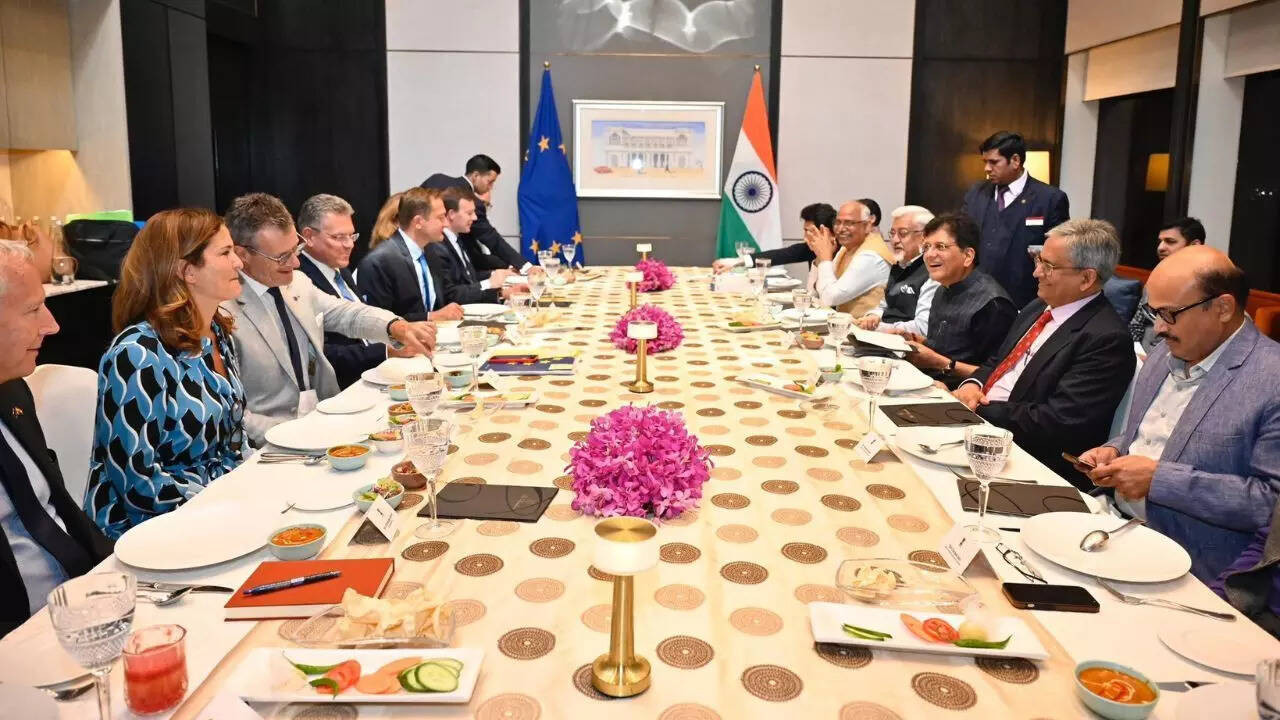India and the European Union are committed to finalizing their long-pending Free Trade Agreement (FTA) swiftly, aiming for a balanced and mutually beneficial pact. Discussions are progressing well, with nearly 60% of the chapters already completed. Several European leaders have expressed their support for the agreement, emphasizing its potential to unlock new opportunities for businesses and people on both sides.
India and EU Eye Swift Conclusion to Landmark Trade Deal
For years, the prospect of a comprehensive trade agreement between India and the European Union has shimmered on the horizon, a potentially transformative partnership fraught with both immense opportunity and intricate challenges. Now, the finish line may finally be in sight. Recent high-level meetings in Delhi, spearheaded by India’s Commerce and Industry Minister Piyush Goyal and a delegation of European Commissioners, signal a renewed commitment to hammering out the details and bringing this ambitious Free Trade Agreement (FTA) to fruition, hopefully sooner rather than later.
The air crackled with optimism as both sides reaffirmed their dedication to an “early conclusion.” While specific timelines remain understandably elusive – these things are rarely simple! – the positive tone emanating from the discussions suggests a tangible shift in momentum. So, what’s driving this renewed push, and what could this India-EU FTA mean for businesses and consumers on both continents?
What’s on the Table? Untangling the Complexities
The India-EU FTA is envisioned as a sweeping agreement, encompassing far more than just tariff reductions. It aims to foster deeper economic integration across a multitude of sectors, including goods, services, investment, and intellectual property rights. Imagine streamlined customs procedures, harmonized standards, and greater certainty for businesses looking to expand their operations across borders. The potential benefits are considerable.
For India, the agreement could unlock access to the EU’s vast market of over 450 million consumers, boosting exports and attracting foreign investment crucial for continued economic growth. Key sectors such as textiles, pharmaceuticals, and agricultural products stand to gain significantly. Simultaneously, India is likely hoping this agreement will support job creation and bolster domestic manufacturing.
On the EU side, the FTA represents an opportunity to tap into India’s rapidly growing economy and its increasingly affluent consumer base. European companies could gain a competitive edge in sectors like automobiles, machinery, and financial services. Furthermore, the agreement would strengthen the EU’s strategic presence in the Indo-Pacific region, a region of growing geopolitical importance.

But getting to the finish line requires navigating some complex hurdles. Discussions have often stumbled on issues such as tariff reductions on certain agricultural products, intellectual property protection for pharmaceuticals, and data privacy regulations. Finding common ground on these sensitive topics requires delicate negotiations and a willingness to compromise on both sides. The path forward involves sustained political will and creative problem-solving.
Beyond Trade: A Partnership for the Future
The proposed India-EU FTA extends beyond mere trade considerations. It signifies a broader strategic partnership between two of the world’s largest democracies, bound by shared values and a commitment to a rules-based international order. In an era of increasing geopolitical uncertainty, strengthening ties between India and the EU sends a powerful signal of cooperation and collaboration.
Furthermore, the agreement could serve as a catalyst for innovation and technological advancements. By promoting the exchange of ideas and expertise, the India-EU FTA can foster collaboration in areas such as renewable energy, artificial intelligence, and healthcare. This can lead to new products, services, and solutions that address some of the world’s most pressing challenges.
For instance, India’s expertise in software development could complement the EU’s strengths in advanced manufacturing, creating synergies that benefit both economies. Moreover, the agreement could facilitate joint research and development projects, accelerating the pace of innovation in critical sectors.
The Road Ahead: Challenges and Opportunities
While the renewed momentum behind the India-EU FTA is encouraging, significant challenges still lie ahead. The two sides need to bridge differences on sensitive issues and ensure that the agreement is mutually beneficial. Transparency and inclusivity will be essential to building public support for the deal. Both Indian and European businesses and consumers must feel confident that the agreement serves their interests.
Looking ahead, the key to success lies in maintaining the current momentum and fostering a spirit of compromise. With sustained political will and a commitment to finding common ground, India and the EU can forge a landmark trade agreement that unlocks immense economic opportunities and strengthens their strategic partnership for years to come. For further information on international trade opportunities, see our piece on [expanding your business globally](related-article-url).
Ultimately, the successful conclusion of the India-EU FTA could usher in a new era of economic cooperation and strategic partnership between these two global powerhouses, yielding widespread benefits across diverse sectors and communities. The journey towards a finalized agreement remains complex, but the potential rewards are undoubtedly worth the effort.







